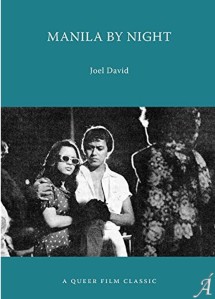The Experimental Cinema of the Philippines once appeared as a category in my list of pre-internet non-journal non-newspaper periodicals, which provides an incomplete picture of the agency’s persistence in my output. For this reason I thought of providing this landing page, essentially a provisional and still gap-filled collection. I happened to have just a few materials from the agency and only one from the Manila International Film Festival, which was officially one of the ECP’s departments but repudiated by the director-general (originally slated to be Imelda Marcos but preempted by her daughter Ma. Imelda a.k.a. Imee). These were the publications I brought along with me to my graduate studies abroad, to serve as basic research material; as it turned out, everything else I left back home – periodicals, videos, and memorabilia – was either pilfered or damaged by typhoons and/or termites.
11011The discovery of a building proposal, submitted in 1981 by the United Nations Educational, Scientific and Cultural Organization, classified as restricted and titled “The Manila Film Centre,” was something I found online, presumably after having been cleared for whatever was confidential about it. The historical structure appears to have followed the proposal, implying that the former First Lady was closely involved in its design from the start.
The Film Palace: A Divergence
Regarding the collapse of the Manila Film Center scaffolding during its construction in November 1981, attributed to careless building procedures, I have consistently presented the following qualifications:
- the architect in charge, Froilan Hong, had extensive global academic preparation and experience in modernist construction (he was Dean of the national university’s College of Architecture around that period), so he understandably contested the number of victims – of which, typically, an exact number will never be determined;[1]
- also, anyone then who still remembered the temblor-triggered collapse of the Ruby Tower residential building about a decade earlier (an event that vicariously traumatized Filipino architects and contractors everywhere, including my father) would not be tempted to cut corners in a far more complicated undertaking.
Since the martial-law regime imposed a news blackout for over a day, I have found it impossible to confirm any preliminary report of the incident even in foreign-press accounts. For this reason, two dates are also mentioned in various reports (either the 17th or the 18th), possibly arising from the confusion caused by the delay in the release of information.
11011The national dailies that carefully printed similar-sounding news acknowledged that some workers died but that construction activities had resumed. As anyone with sufficient experience with media psychology could have foretold, several speculations – ranging from natural to metaphysical – emerged to clarify, embellish, or challenge the official version of events.
11011For my part, I can only add what first-hand experience could affirm: on the (still-to-be-determined) date of the incident, I was in the vicinity of the construction, along with the rest of the public-relations staff, winding up overnight preparations required to beat some printing deadline for the production of materials for the MIFF. Our office at the Philippine International Convention Center faced the same parking lot where the MFC was rising dextrally, so occasionally we would peer out to see the structure, brightly lit as if being readied for a Hollywood blockbuster, with ladders, derricks, and hoists on all sides.
11011A few hours after midnight a strong tremor shook the place. Everyone rushed to the windows to see what happened to the construction. The sight was uncanny, with workers scampering everywhere, the ladders filled with men clambering downward. From this distant spectacle we knew that something dreadful could have happened (as it did), but we had our tasks to complete and were groggy from working nonstop already.
11011I mention this specific detail because it appears in no other account except “Grains & Flickers,” the article I wrote for the 2016 book edited by JPaul S. Manzanilla and Caroline S. Hau, titled Remembering/Rethinking EDSA, as well as in my monograph Manila by Night: A Queer Film Classic (Arsenal Press, 2017). One careless commentator blurted out in a group discussion (all right, chat) that my story sounds like an exoneration of the people involved in the tragedy – neglecting the crucial facts that first, it happened, and second, I was with witnesses. Undeniably it complicates the narrative, but I wouldn’t say it exculpates the usual suspects unless one were to operate within the fully guilty-vs.-fully innocent binary to which critically ill-equipped (though unfortunately typical) netizens have become accustomed.[2]

The Malakas at Maganda mural displayed at the entrance to the main theater of the Manila Film Center (from Lakbay ng Lakan, reprinted with permission). For a discussion, please see the Illustrational Problematics page I uploaded for my book Manila by Night: A Queer Film Classic.
A Haunting
I have to begin by expressing my mounting vexation at the number of netizens asking about the presence of ghosts in the building. Scientific and historical materialism before everything else, please (and sorry for stating what should have been obvious already). We moved in after the MIFF for which the MFC was constructed had ended, and a number of accounts correctly state that government officials were hoping for an exorcism ritual – but identify Imelda Marcos as its instigator. This made no sense, since her event had just finished and it was the ECP, led by Imee Marcos, that was to hold office in the building; it was also out of character for Mrs. Marcos, whose advisers would have dissuaded her from conducting such an exercise. (The MIFF, as an independently run ECP department, occupied an upper floor but was operated by its Deputy Director John J. Litton, who preferred to use the initials JJL.) Fortunately a former supervisor, Nena C. Benigno, provided a definitive account of Imee Marcos’s direct involvement in the ritual in a magazine interview in 2015.
11011The news about Betty Benitez perishing in a vehicular accident after an assignation with Onofre D. Corpuz had a whiff of karmic schadenfreude about it, since Benitez was in charge of the MFC construction project. The story that what caused their car to swerve disastrously was a vision of bloodied workers crossing the street first circulated as a persistent rumor, but it was another death – that of Benigno Aquino Jr. in September 1983, returning from exile in the US – that finally facilitated the publication of the tale. It came out in a Catholic Church opposition broadsheet, Veritas, minus any authorial credit, and added the slant that the couple, married but not to each other, was conducting an affair. I recognized the article’s stylistic flourishes as typical of a former office co-worker, Eddie Pacheco, who had started expressing dissatisfaction with the government’s handling of the Aquino assassination and resigned soon afterward. (Pacheco lived in Pampanga after his retirement but was killed in an apparent early-morning burglary in 2012.)
11011What haunted my memory during and after my stint at the agency was an encounter with an elderly security guard. He was extraordinarily avuncular, in the manner that working-class men carry over from their drunken states when they realize how well it goes over with strangers they want to impress. I was leaving work with some of my office mates and lingered by the exit as they timestamped their employee-record (“bundy” in Noypi & Aussie English) cards. The old man started talking about how he’d been guarding the place during the construction period, so I asked if he witnessed the collapse of the scaffolding. He talked at length about workers who lost their limbs, if not their lives, and bodies that had to be cemented over in order to meet the building completion deadline.
11011I knew he was gravely endangering himself but he seemed to be unaware of the kind of reality I’d been able to observe: Imee Marcos enrolled in the same class on Philippine nationalism that I was taking under Renato Constantino a few years earlier, and several heavyset middle-aged barong-clad men, definitely not national-university types, presented their registration credentials and positioned themselves all over the classroom while she sat in the center. I thought I could just warn him another time, when less of a crowd would be standing around … but he never showed up again afterward.
11011He could have been fired, or transferred, or just scared away from his job – but this was martial law, and it was never advisable to assume anything less than the worst. If I’d been one of the over-imaginative (though frankly airheaded) cinema attendants who loved indulging in ghost tales and never wanted for listeners prepped by the MFC’s bloody history, I would have spread the story that he must have been one of the fallen workers who wanted his version of events told right, a revenant who returned to the afterlife upon accomplishing his mission. It would have been a far less distressing account than the real-life possibilities I had to accept.
Other ECP Materials in Ámauteurish!
I’d reviewed a few films that came out during this period, including the ECP productions except the last one. I’d still been working out a critical voice and perspective then, so I’d prefer not to list these titles here, although anyone interested for whatever reason will be able to find the films in this blog’s Reviews section.
11011The release (in more ways than one) of the Ishmael Bernal film Manila by Night may be regarded as the ECP’s final positive contribution to Pinas pop-culture history: it was banned upon completion in early 1980 and screened with seemingly uncountable cuts and deletions – the most severely censored movie ever in local cinema. After the MIFF’s reliance on pornographic films in order to fund the First Lady’s world-scale bacchanals followed a few months later by the killing of Aquino, the MFC sounded out a call for artistic sex-themed products.[3] I remember writing an informal letter to an official suggesting that MbN should be considered a prime candidate because it was officially accepted for the Berlin International Film Festival competition (though prevented from leaving at the time because of the First Lady’s disapprobation); it won the local critics’ award despite its badly mangled condition; and its producer actively participated in providing well-attended titles for MFC screenings. After this I also recall processing the documentation necessary for the release of the integral version of the film for screening exclusively at the MFC.[4]
11011The definitive empirical summary of the agency’s performance lies in documents, stored on drives, that are now lost: its annual reports, all of which I researched, compiled, and wrote. The first one, titled Experimental Cinema of the Philippines: Year One, came out as a glossy publication, while the second and third were bound printouts. Why only three years, when the ECP was set up in 1981 and the EDSA uprising was in 1986? Once more, despite most accounts’ misperception, the organization existed only for as long as Imee Marcos could devote her full attention to it. After the Aquino assassination (and upon getting her now-controversial law degree from the national university), she decided to run for the interim parliament and focus on her duties therein. With the MIFF only too willing to take over the agency, she arranged for the ECP to be dissolved and a new body called the Film Development Foundation of the Philippines set up in its place. This was the body that was shut down in February 1986.
11011While it was around, the public relations department where I worked managed to come up with a magazine, SineManila, limited to a maiden issue because of a nasty turf war waged by a military agent and her staff who insisted that her department’s tiny magazine, Filipino Film Review (my complete file of which was lost), be the only ECP publication that the public could access. We also managed to come up with only one in-house publication, Jario Scenario, since the ECP at this stage was nearing its transition to the FDFP.
11011Since the officials in our department were outsourced from the National Media Production Center (now the Philippine Information Agency), we were obliged to serve all ECP departments including the MIFF. (Recall the opening account where our experience of the tremor that caused the MFC tragedy was due to one of several all-nighters necessitated by an impending MIFF printer’s deadline.) The start of my employment was right after the MIFF dry-run edition, during which I managed to secure passes for the critics circle and experienced the kind of overload that led me to regard filmfests as less-than-ideal venues for appreciating movies.
11011The next year’s (first regular) MIFF was the one held at the MFC building, already and inevitably notorious even before it opened. It had Satyajit Ray as chair of the competition jury, and honored a now-forgotten film, 36 Chowringhee Lane, Aparna Sen’s debut as a director, defeating entries by the likes of Roger Donaldson, Rainer Werner Fassbinder, Lawrence Kasdan, Karel Reisz, François Truffaut, and Peter Weir. A daily magazine, Manila Film International (of which my complete file was also irretrievably damaged), was published but not by our department. The next year’s winner was another close-to-forgotten entry, the late Yu Wigong’s Memories of Old Peking (a.k.a. My Memories of Old Beijing), but unlike the previous year, it also had Filipino films in competition: Oro, Plata, Mata (which won a special jury prize) by Peque Gallaga and Moral by Marilou Diaz-Abaya.
Essential Readings
In coordination with the now-defunct Metro Manila Commission, the ECP and MIFF launched separate publications the next year. The ECP’s was a book edited by Rafael Ma. Guerrero, titled Readings in Philippine Cinema – as definitive a text as it was possible to compile up to that point. The MIFF had strictly supplementary material, also edited (though uncredited) by Guerrero, titled Focus on Filipino Films. The eponymously titled film module that the latter accompanied can well be regarded as the highlight of all the MIFF editions put together: a nearly ideal canon-formation project that conscripted film experts who screened available films (though only once) and deliberated on whether they should be included or not; new prints of the selected titles were then struck, with French and English subtitles. Eye-opener accounts such as “Manila’s Angels,” Elliott Stein’s article in Film Comment, made exceptions in a properly critical report of the MIFF’s proceedings in order to express admiration for several of the module entries.
11011Needless to add, this first-time attempt was never to be replicated thereafter. Many of the now faded prints are regarded as still the most acceptable available copies of their specific titles, with digital remastering the only possible future stage for them. The next year’s MIFF reverted to the dry-run dimension, to be able to evade the then-growing united-front movement that arose in protest over the Aquino assassination.
11011A still insistently forward-thinking ECP administration proceeded with its last batch of productions, which gave me the opportunity to interview Soltero director Pio de Castro III on location in Baguio – at the Hyatt Terraces, the same hotel that collapsed from another tremor several years after. They also assigned me to attend the courses of the lately introduced undergraduate film specialization at the national university, to be able to eventually set up the ECP’s own education program. I countered that, since I already held a bachelor’s diploma from the institute that proffered the degree, I would need only a few extra units in order to earn the new baccalaureate itself. I thought my proposal would have come across as audacious, but then there were already less tasks to attend to with the “indefinitely postponed” MIFF and the impending transition of the director-general to her interim Batasang Pambansa commitment. The February 1986 ouster of the Marcos administration occurred during my final semester of undergrad film studies, so just like in my first bachelor’s degree, I was once more a working student who was out of a job upon graduation.[5]
Notes
I do acknowledge that the memoir format will better serve some of the material presented here, but I prefer not to let this opportunity pass in case I wind up unable to complete the writing project. So I will name this early the people to whom I plan to dedicate the forthcoming effort: the ones (possibly entirely men, but we have no way of knowing any longer) who unwillingly and prematurely gave up their lives for the construction of the hideously pretentious building where we had to work for too long. The ouster of the Marcos regime was not bloody enough to redress the violence visited on you (as well as on countless others), and the silence with which your annihilation was completed.
[1] A letter sent by Baltazar N. Endriga, former chair and president of the Cultural Center of the Philippines, states that Froilan Hong counted seven fatalities and recapitulates the standard account of how “the scaffolding supporting the platform into which concrete was being poured collapsed and the seven workers fell to their deaths. The bodies of all seven were then retrieved and given the proper rites befitting the dead. [Hong] belied the popular story that many workers were buried alive in concrete and that in the hurry to finish the construction, they were simply entombed under the Film Center’s bowels” (“Account on the 1981 Manila Film Center Deaths,” Inquirer.net, February 26, 2021). Endriga does not state his involvement in the project or whether Hong was present during the accident and/or rescue operations.
[2] I did manage to secure recent official confirmation that short night tremors, ranging from moderate to strong, hit Luzon during both dates, after the Philippine Institute of Volcanology and Seismology referred my query to the Philippine Atmospheric, Geophysical and Astronomical Services Administration. (Since PHIVOLCS was founded only after the incident, in September 1982, the tracking of earthquakes during the period in question was performed by PAGASA.) I have no knowledge of the reliability of the government’s seismographic instruments or record-keeping activities during that time, however, so these questions will have to be regarded for now as compounding the other problem I mentioned of determining the exact date of the MFC tragedy.
[3] Not surprisingly, the MIFF concerned itself with the same goal, since it had already reaped profits from adults-only screenings from all over (downtown venues were censorship-exempt during the festival period). Producers were convened at the MFC’s MIFF office for specific instructions as to what they may be allowed to present – in porn parlance, tits & asses as well as simulated sex scenes. The ECP, for its part, provided support in the form of flyers and warm bodies for the Concerned Artists of the Philippines’s anti-censorship rallies.
11011When the expected moralist backlash occurred, with the chief of the Board of Censors for Motion Pictures asserting her presidential appointment and thereby operating at the same governmental level as Imee Marcos, a high-ranking MIFF official issued a statement that the films were smutty because producers were deliberately violating the limits that the government prescribed. The producers themselves, who were constant visitors at the MFC because of other services such as funding subsidies and tax rebates, replied (in strict confidence, understandably) that it was this same top MIFF official who kept pestering them to shoot far raunchier scenes even if these no longer had any relevance to the films being considered. Said official was blasted on national television after February 1986 by Lino Brocka, for his opportunistic claim that he had been supportive of the anti-Marcos opposition all along.

MbN, as restored by the Marcos regime.
[4] What mystifies me is why members of the critics circle (who that time congratulated me for actualizing the release of the uncensored print) insist on calling the film anything except the title its producer and director-writer provided: because the film that their awards honored was not titled Manila by Night? (City after Dark was the censored version, while Manila after Dark does not even apply to any movie whatsoever, although check out this kink in my argument.) The same government that banned, then censored, the film, also restored the original title when it was approved for an MFC screening. As the person designated to host the premiere night’s program, I saw with my own eyes the words “Manila by Night” projected onscreen during the movie’s opening credits.
[5] I might as well provide one of the plausible urban myths that some media colleagues of mine claim as factual, since it does denote a happy ending and resembles my experience: one of Imee Marcos’s bodyguards supposedly realized that his official enrollment in the same courses she was taking at the national university was an opportunity for self-advancement, and actually completed for his own credit the same undergraduate and law degrees that she claimed to have finished (though without any official documentation in her case); he passed the bar exam and no longer had to risk his life for the sake of any high-ranking government bigwig. Some day some enterprising investigative journalist will have to uncover the truth (or falsity) of this singularly marvelous story.













 ORCID ID
ORCID ID 